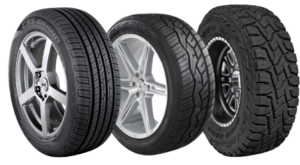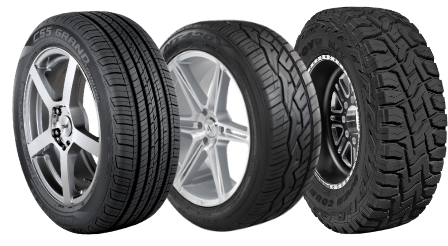Wheels and tires are two of the most important parts of your vehicle. They make your car run more smoothly and efficiently. This is why it’s important to choose the right ones for your vehicle. 
The wheels are the metal part that holds the tire. The outer edge of the wheel is called the rim.
The wheels and tires are vital parts of a car. They are responsible for converting power from your engine into the spinning force that propels your vehicle down the road. The tires are also responsible for maintaining traction on the road.
Despite the fact that they are both important components of your car, the terms “wheel” and “tire” are often used interchangeably. This can be confusing for those who are unfamiliar with automotive terminology. It is imperative that you understand the difference between the two to ensure your safety while driving on the road.
Wheels are metal components that connect to the hub of an automobile through an axle. They can be constructed from a variety of materials, including aluminum and steel alloys. Aluminum wheels are becoming increasingly popular because they offer a lighter-weight option that can help improve fuel efficiency. Regardless of the material, the wheel must be compatible with your car’s tires in order to properly function.
The diameter of a wheel is determined by measuring across the face of the wheel, excluding the outer lips that hold the tire in place. The wheel’s diameter can be easily measured using a tape measure.
Applications
Wheels and tires play a critical role in the performance of any vehicle. There are many types of wheels and tires, each designed to cater to specific applications. For example, alloy wheels offer a lighter option that enhances fuel efficiency, while steel wheels offer unrivaled durability.
A wheel is a circular metal component fastened to the hub located under the fender of your car. It consists of two key parts: the rim and the disc. The rim holds the tire in place, while the disc keeps the rim and axle hub connected. A tire is a ring-shaped rubber object that is fastened around a wheel. It consists of two distinct components: the tread and body, each serving different functions. The tread is responsible for creating traction on ground surfaces, while the body allows it to contain a certain amount of compressed air.
In a recent study, researchers showed that tires provide superior traction on loose surfaces like mud and snow compared to steel tracks. It was also found that tires are able to absorb more energy from shocks than steel tracks, thereby reducing the force required to accelerate and decelerate. A tire’s performance can be improved through proper maintenance, such as monitoring the air pressure and checking for runout.
Materials
When selecting wheels for your vehicle, you will be presented with a variety of material options. The most common are aluminum (cast or forged) and steel. Aluminum wheels offer a lightweight option that can improve fuel efficiency and enhance handling, while steel wheels are incredibly durable and cost-effective.
The wheel is a circular metal object that mounts your tire and contains the rim and axle hub assemblies. It may come in different shapes, such as a spoked wheel, but the most important characteristic is its size. Wheels can fit a wide range of tires, so it is important to select the right one for your vehicle.
Tires and wheels are often confused, but the two components serve very distinct purposes. While the rim of the wheel is constructed from metal, the tire is built from rubber to grip the road surface. For this reason, the rim of the wheel doesn’t touch the road; only the tire does. Interestingly, some wheels (such as those on a gyroscope or an old covered wagon) do not have tires but still have rims. However, most automobiles use tires on their wheels. The specialized rubber allows for better traction and performance on the road, making your car a safer and more enjoyable experience to drive.
Components
Some people use the words “tire” and “wheel” interchangeably, but they’re two separate elements. The wheel is the circular metal component that mounts to the hub assembly, and the tire is the molded rubber casing that sits on top of it. While they work together to foster a car’s movements, each one has a distinct role.
Tires are built with a unique tread pattern that ensures the vehicle can grip the road, as well as size measurements and other features that allow for proper mounting on the wheels. They also have a valve system through which air or nitrogen can be introduced into the tires, helping to maintain the proper pressure that’s needed for optimal performance.
On the other hand, a wheel has a barrel that creates a platform for the tire to sit on. Its edges are shaped to form flanges that prevent the tires from slipping during driving, and they have flat sections called beads that provide a surface on which the tire’s edge rests. Its inner surface contains a number of structures that are used to support the tires, as well as the lug holes that hold the rims on the wheel.
Diagram
Wheels are the metal parts of a car that hold the tire and connect it to the axle hub. They can be made of steel, aluminum, or other materials. Wheels are typically sized to match the tire. Larger wheels can look sportier and more luxurious, but they can also add unsprung weight that affects handling.
A wheel rim is the metal outer edge that supports a tire. Rims are generally made of stamped and welded steel. Some have a special coating to resist corrosion and other environmental factors. They may have spokes, lug holes, or other design elements to improve strength and style.
The inner part of the wheel is called a barrel. The inside diameter of the barrel is called the drop center, which determines the type of wheel mounted on the car. The barrel edges are shaped to create inboard flanges that prevent the tire from slipping off the wheel and flat pieces called beads that support the tire’s edges.
A wheel can be mounted on a hub with lug nuts or on a shaft with a sprocket. Lug nuts are threaded fasteners that secure a wheel to the car. The number of lug bolt holes on a wheel and the width of the bolt circle determine the wheel’s bolt pattern (so 5 lug bolts and a 4 inch bolt circle would be a 5×4 bolt pattern). Wheel weights are also used to balance the wheel assembly.
Types
There are a variety of wheels available in today’s market that can add to your car’s aesthetic and performance. The most common types are steel, aluminum alloy, and chrome. These are all available in a wide range of sizes. Some wheels come with a center bore that can be adjusted for different vehicle fittings. They also have lug holes, or the small bolt openings on the front face of the wheel, for mounting tires.
There is a common misconception that the tire is part of the wheel, but this is incorrect. The tire is the homogenous piece of molded rubber that touches the road surface directly, while the wheel is where the axle hub, spokes, and central disc are housed.
Wheels are available in a variety of finishes, from silver and black to painted, powder-coated, and even clear-coated. A common use of wheels is for snow, as their weight helps them dig into the roadway and improve traction. In many regions, people keep a set of steel wheels around just for the winter months. They are less expensive than alloy alternatives in similar sizes and can be a good choice when extra traction is needed.
Construction
Wheels are often constructed in one piece, either cast or forged from a metal billet. However, most wheels are made of at least two or three pieces welded together. This allows for better quality control during the manufacturing process and allows manufacturers to design more complex parts, such as the center section in two-piece wheels or the rim in three-piece wheels.
an imaginary line running through the center of a wheel when viewed from the front of the vehicle. It is a setting that can be adjusted during an alignment, and it helps to compensate for centrifugal force.
The process of heating a metal wheel to expand it and then quenching it to return it to its original size and shape This allows for a more precise wheel design and reduces the material needed to make it.
The proportion of a tire’s sidewall height to its width It is indicated by the letters following the slash in the tire size code, such as P205/65R16. A higher aspect ratio means a taller sidewall. A lower one means a smaller sidewall.

